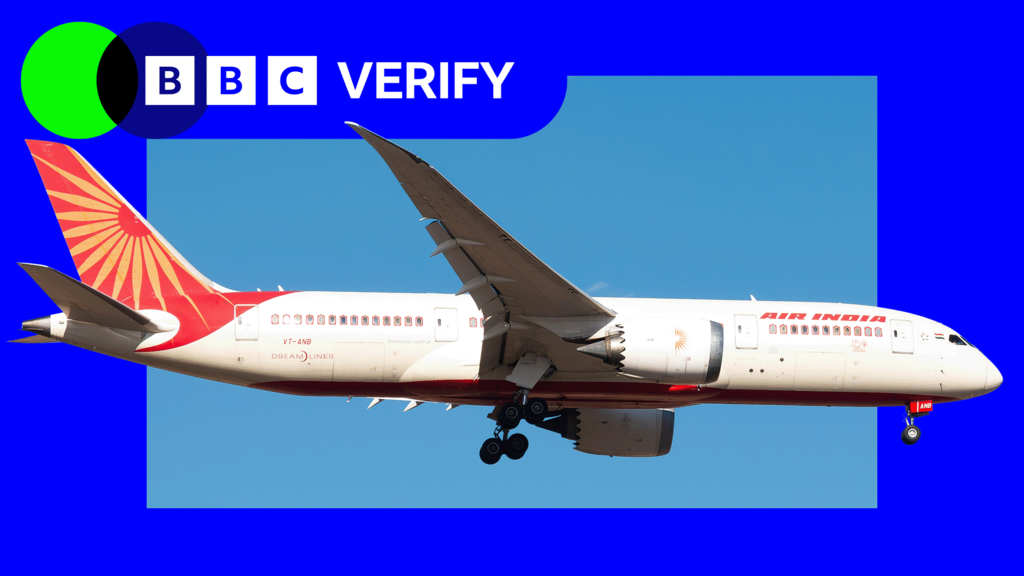A comprehensive investigation will be needed to determine the precise cause of the Air India Flight AI171 crash on Thursday afternoon, en route from Ahmedabad to London Gatwick. However, the critical moments immediately following takeoff are often the most challenging phase of flight.
Indian authorities will collaborate with US and UK experts to ascertain the factors that led to the Boeing 787-8 Dreamliner’s crash approximately 1.5km from Sardar Vallabhbhai Patel International Airport, shortly after takeoff. This marks the first fatal crash involving a 787-8 Dreamliner since its commercial launch in 2011. The tragedy resulted in the loss of 241 lives onboard and on the ground.
The BBC has consulted aviation experts and Indian-based pilots, some speaking anonymously, who regularly operate 787-8s from Indian international airports. The goal is to analyze potential contributing factors to the plane’s impact on residential buildings in Ahmedabad.
The flight crew consisted of Captain Sumeet Sabharwal and co-pilot Clive Kundar, both highly experienced aviators. Captain Sabharwal reportedly possessed over 22 years of experience and more than 8,000 flight hours.
The aircraft, carrying 242 individuals, departed Ahmedabad International Airport at 13:39 local time (08:09 GMT), according to Air India. India’s Home Affairs Minister Amit Shah reported that the plane was carrying nearly a full fuel load of 100 tonnes.
India’s aviation regulator confirmed a mayday call from the cockpit almost immediately after takeoff, followed by radio silence. While the reason for the mayday remains unclear, the sole survivor reported hearing a loud bang as the plane struggled to gain altitude.
BBC Verify-authenticated footage shows the plane flying low over a residential area. Data indicates the plane reached a height of 625ft (190m) before descending and disappearing behind buildings, followed by a large explosion. One pilot commented that a dual engine failure would have left the crew with insufficient time to react.
CCTV footage analyzed by BBC Verify reveals the plane was airborne for approximately 30 seconds before crashing in a densely populated residential area, causing significant damage to buildings, including hospitals and government structures.
Determining the precise cause of the crash based solely on video evidence is currently impossible. A detailed investigation using the flight data recorder (black box) and debris analysis will follow.
Speculation amongst experts includes the extremely rare possibility of a double engine failure. Questions have also been raised about the deployment of the Ram Air Turbine (RAT), an emergency backup system. While a double engine failure is exceptionally rare, as exemplified by the 2009 “Miracle on the Hudson,” experts also suggest fuel contamination as a possible cause.
However, Marco Chan, a former pilot, stated there is no evidence to suggest a dual engine failure in the available footage. Mohan Ranganathan, an aviation expert, described a dual engine failure as a “very, very rare incident.”
GE Aerospace and Boeing are providing support to the investigation. Another theory being explored is a potential bird strike, especially considering Ahmedabad airport’s reputation for bird activity.
The airport is known for its significant bird population. Gujarat state reported 462 bird strike incidents over five years, with a majority at Ahmedabad airport, according to data presented to Parliament in December 2023. A Times of India report also noted a 35% increase in bird strikes in 2022-23. However, a senior pilot noted that a bird strike rarely causes catastrophic damage unless both engines are affected.
Some experts suggest the possibility of unextended flaps during takeoff, although this is disputed by other pilots and analysts. Unextended flaps would significantly hinder a fully loaded aircraft’s ability to achieve lift, especially in hot conditions like those in Ahmedabad (near 40°C).
CCTV footage shows the plane struggling to gain altitude and subsequently descending before the crash. A takeoff with retracted flaps would activate the 787’s take-off Configuration Warning System, alerting the crew. Former pilot Mr. Chan noted that while the footage is unclear, such an error would be highly unusual, suggesting potential human error.
Additional reporting by Jake Horton
What do you want BBC Verify to investigate?
Mayor of London Sadiq Khan was not pleased with the government’s recent spending review.
How did an air show attracting more than a million people a year end up getting cancelled?
Fiongal and Jamie Greenlaw-Meek had plans to run a wellness workshop at the event on Saturday.
A special service was held at a Hindu temple in Preston in a show of solidarity and consolation.
Family members are struggling to come to terms with what has happened.

